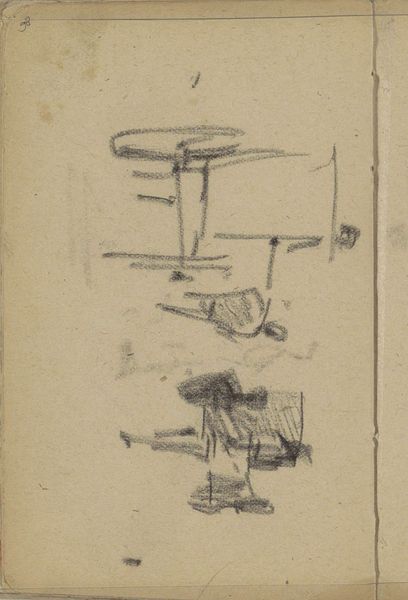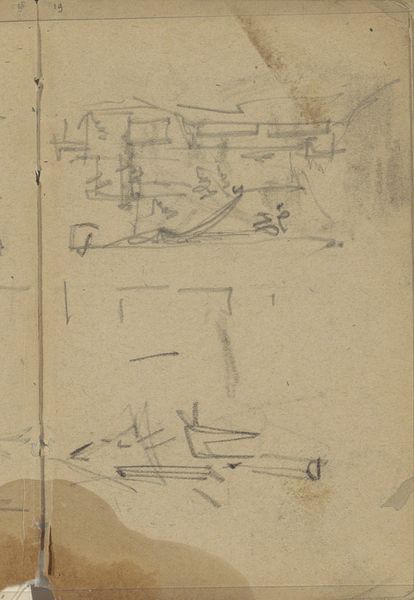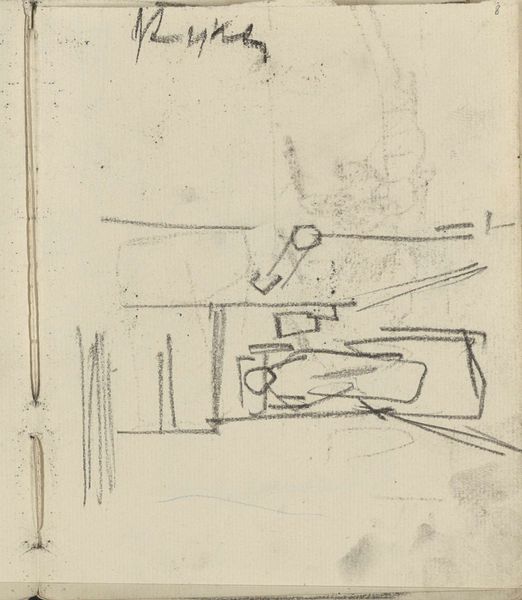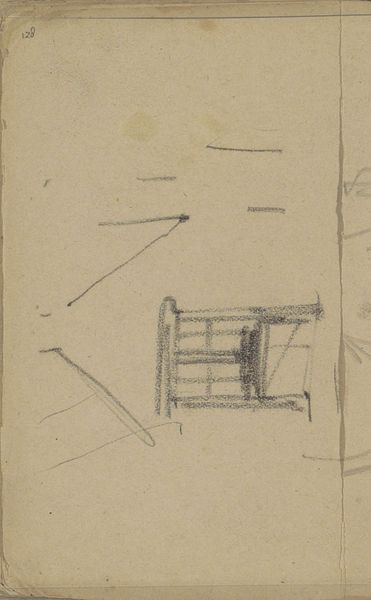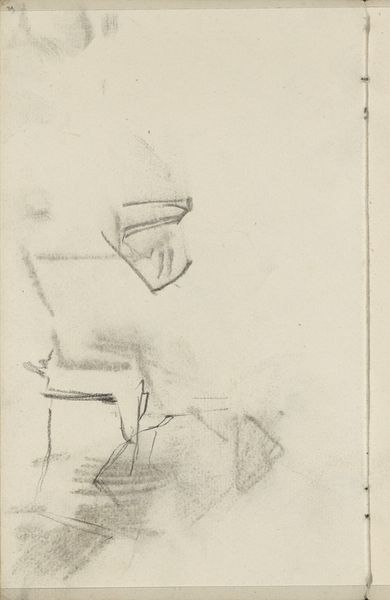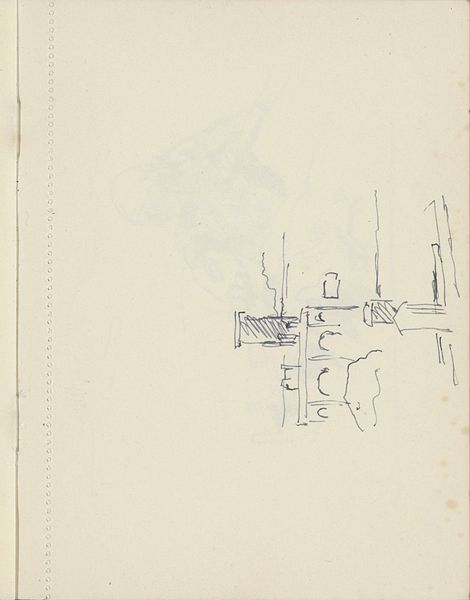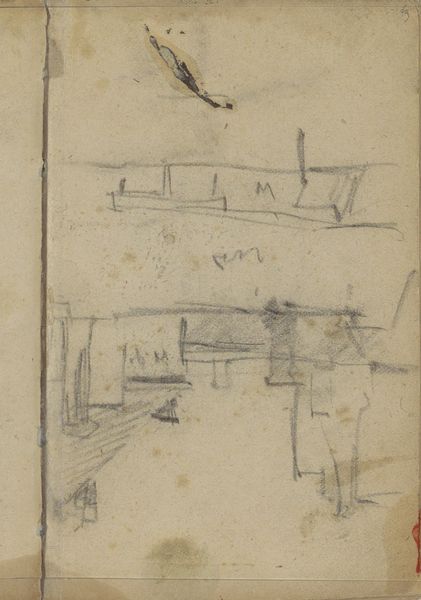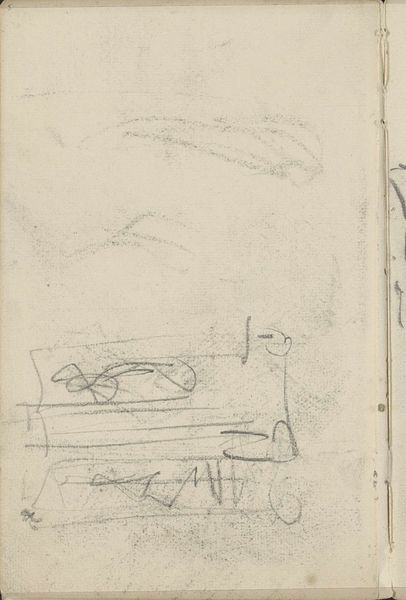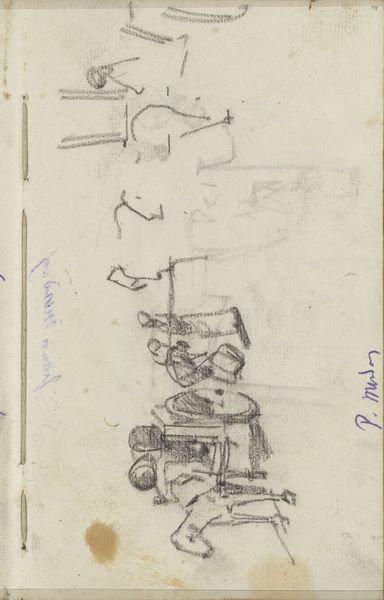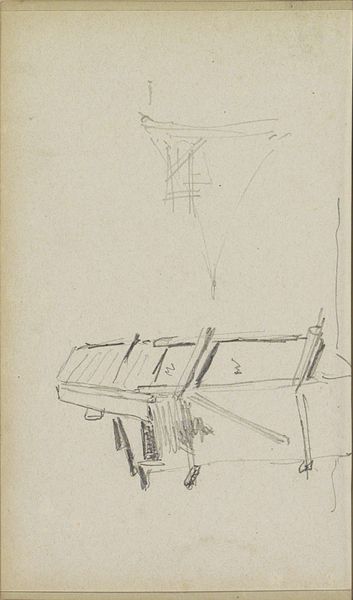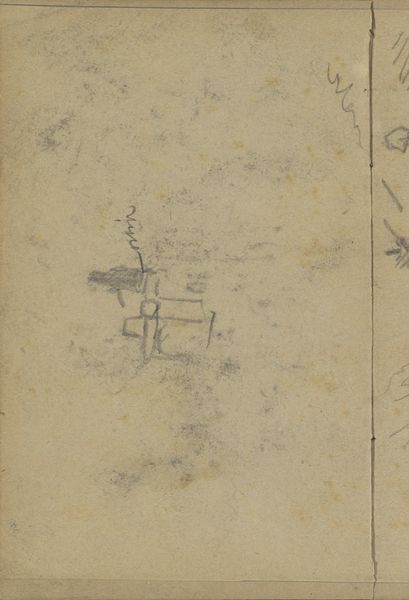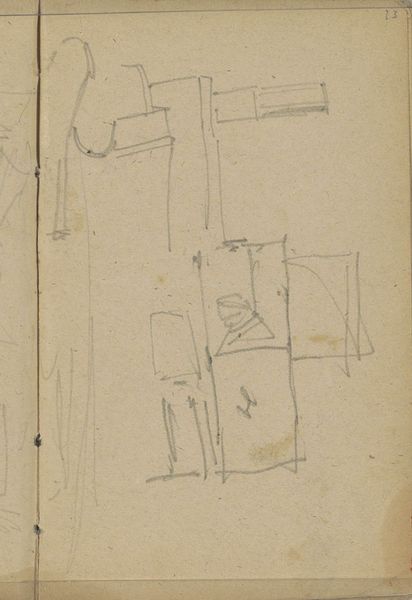
drawing, paper, pencil
#
drawing
#
amateur sketch
#
aged paper
#
toned paper
#
light pencil work
#
impressionism
#
sketch book
#
hand drawn type
#
paper
#
form
#
personal sketchbook
#
pen-ink sketch
#
pencil
#
line
#
sketchbook drawing
#
sketchbook art
#
realism
Copyright: Rijks Museum: Open Domain
Editor: Here we have George Hendrik Breitner's "Studie," made between 1881 and 1883. It's a drawing in pencil on paper, part of the Rijksmuseum collection. It feels like a glimpse into the artist’s working process, a fleeting thought captured on paper. What strikes you about it? Curator: The materiality of this work is central. Notice the aged paper itself – the visible signs of use and time. How does that material condition influence your perception of it as a 'study'? It’s not a finished masterpiece meant for display, but rather evidence of Breitner grappling with form. Editor: So you're saying its value lies not in some aesthetic ideal, but in revealing the artist's labor? Curator: Exactly. Consider the social context. Breitner was working during a period of immense industrial and urban change. The roughness of the sketch, the cheapness of the materials - does it hint at an alienation from traditional academic artistic practices? It suggests a turn towards documenting the everyday, the fleeting reality of modern life as experienced through work and making? Editor: That's a interesting connection. I hadn’t considered how his choice of materials might be a kind of commentary on the art world and the social landscape. Do you think this focus on everyday subjects elevates his work or is it, perhaps, a reflection of shifting social values? Curator: It challenges the established hierarchy. Is "high art" inherently superior, or are these sketches just as valuable for showing us the material reality of artistic creation within a specific historical and economic moment? How does the ‘sketch’ become ‘art’ – is it Breitner’s hand, or the museum’s display case that creates value? Editor: So by valuing process and material, we challenge these categories! It makes me look at the piece differently, appreciating it as a product of labor. Curator: Precisely! It encourages a deeper understanding of art-making within its economic and social circumstances.
Comments
No comments
Be the first to comment and join the conversation on the ultimate creative platform.
